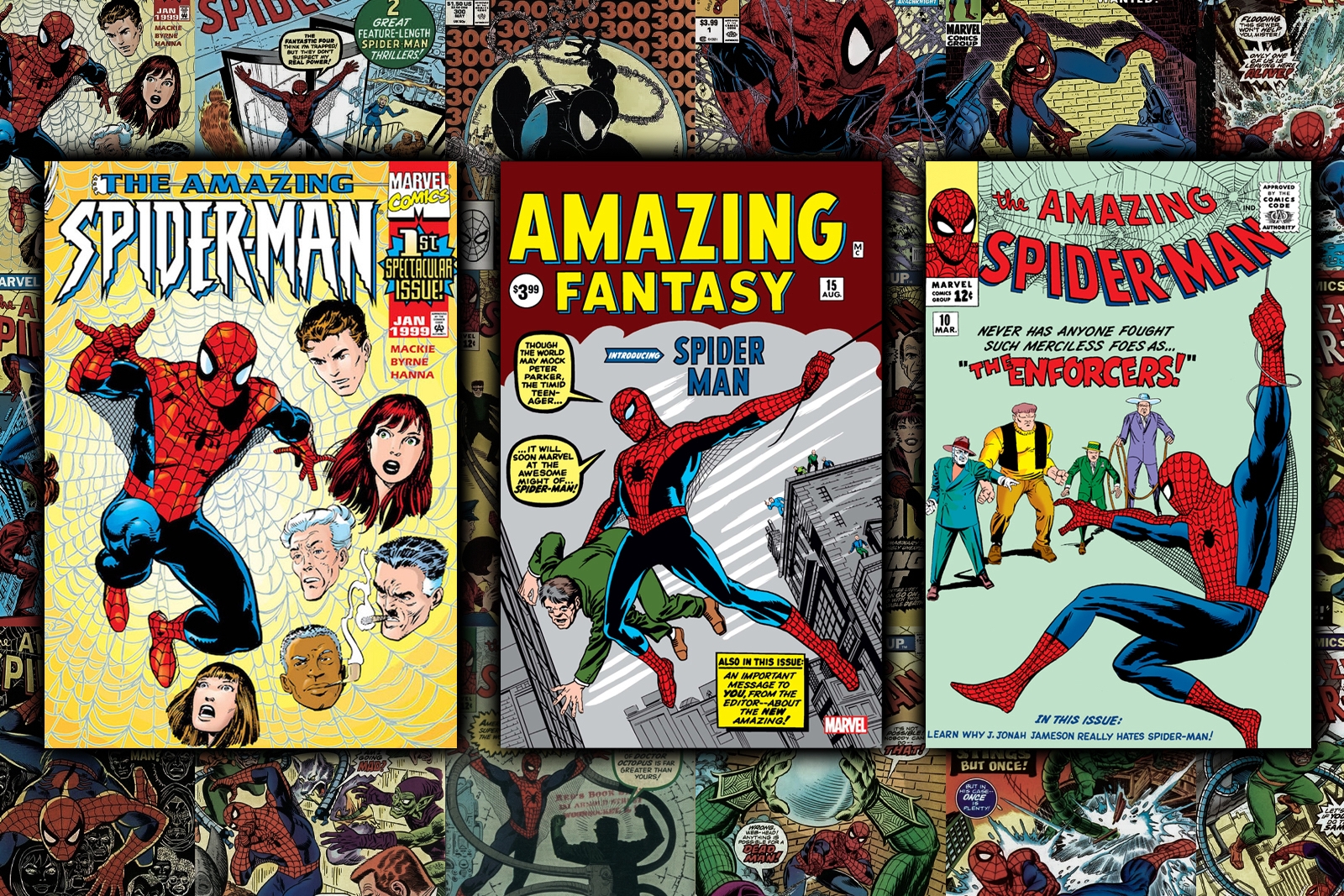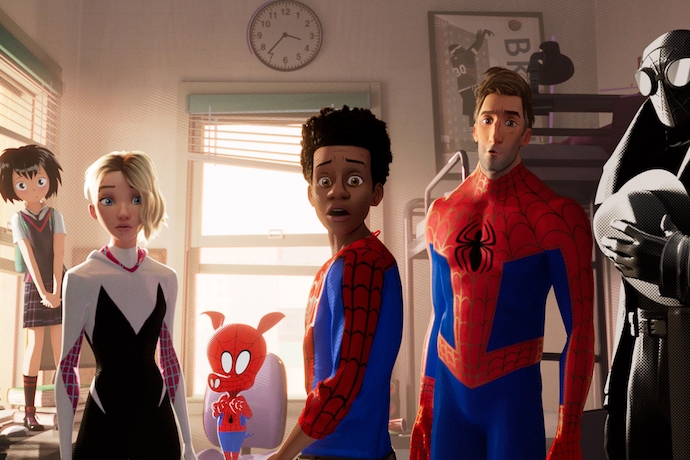
Spider-Man at 60: Reflections on ‘No Way Home’
There was something in the air that opening night of Spider-Man: No Way Home. The audience crackled with the same energy that it had for event movies like Avengers: Endgame before. And it was palpable, the audience cheered a lot during that movie, like when certain moments happened or when certain characters showed up.
It reminded me of how we had lost the collective experience of watching something together in the pandemic. But hearing those cheers when certain scenes happened and certain characters came back reminded me of how much enduring appeal this character has, even now, 60 years after his initial debut in the pages of Marvel Comics.
By its box-office success, it’s clear that I’m not the only one who was enraptured by the film, but there it is. I adore Spider-Man: No Way Home, it’s one of the better Marvel movies to date and a wonderful ode to the character as a whole. It’s funny, delightfully entertaining, and surprisingly emotional, basically everything you would want out of a big popcorn movie.
It is easily the best of Tom Holland’s MCU outings as the famous web-slinger, a trilogy that already had two impressive previous entries, and leaves the door open for even more, perhaps even drastically different future stories to be told with the character. 20 years after Sam Raimi and Tobey Maguire pioneered how to depict the character in a blockbuster movie, Variety recently called Spider-Man “Hollywood’s most important box-office force” and the “most important film franchise.” The web-head doesn’t seem to be going anywhere any time soon.
Not too shabby for a nerdy teenage boy named Peter Parker, who emerged from the pages of Amazing Fantasy #15 by Steve Ditko and Stan Lee, a story their editors at Marvel dismissed and had so little hope in that they made Spider-Man the star attraction of the last issue of a canceled comic series.
However, the character caught on so well that he was given his own series just a few months later, and the rest, as they say, is history. Spider-Man has taken the world over, rivaling DC Comics Superman and Batman for global influence and popularity.
Just as No Way Home features different incarnations of the character, I have found myself reflecting on my own favorite interpretations of the character. My introduction to the character was the 90s cartoon, with its electric guitar take on the classic Spider-Man theme song permanently emblazoned on my neurons. But it provided a good basis for my understanding of the character, as Spider-Man (Christopher Daniel Barnes, who I associate as being the voice of Spider-Man as much as I do Kevin Conroy for Batman) tries balancing a normal life as Peter while living up to the responsibility of being Spider-Man. You got to see the supporting people in his life, like his mother figure Aunt May (Linda Gary, then Julie Bennett), girlfriend Mary Jane (Saratoga Ballantine), and curmudgeonly boss J. Jonah Jameson, voiced by the late, great Ed Asner.
The longtime foe to both Spider-Man and Daredevil, Kingpin, is getting a lot of attention after the iteration of the character depicted by Vincent D’Onofrio, last seen in Netflix’s Daredevil series, recently popped up again on the Disney+ show Hawkeye. But my introduction to the character was the one in the cartoon, voiced devilishly by the late veteran actor Roscoe Lee Brown. Other unforgettable villains include Doctor Octopus (Efrem Zimbalist Jr., who also voiced Alfred in Batman: The Animated Series), and especially Venom, voiced by Hank Azaria of The Simpsons.
Controversial take: I think the animated series’ depiction of how Peter gets the alien symbiote costume, discards it, and how it merges with Eddie Brock to become Venom, is the best and most comics-accurate depiction of that story yet put to film. I also love the way the show depicted characters like Kraven the Hunter (Gregg Berger) and Black Cat (Jennifer Hale). Since those characters have yet to be depicted on film, I think the show would provide a great template on how to translate them successfully.

The show also featured guest appearances by the likes of the X-Men, the Fantastic Four, and Iron Man from their respective 90s cartoons, as well as Doctor Strange, Captain America, Daredevil, and even Morbius, the titular character in the yet-to-be-released spinoff movie starring Jared Leto. This makes it feel like a proto-MCU many years before that was even a thing. Since this cartoon first aired in the mid-90s, there have been six additional Spidey-oriented animated series, including one currently airing.
One of those animated series was an adaptation of an important comic book series for me that I read in high school called Ultimate Spider-Man. This interpretation served as a major inspiration for the Tom Holland series, and it’s easy to see why. Launched in 2000 by writer Brian Michael Bendis, who is currently working on a great run of Superman over at DC Comics, and veteran artist Mark Bagley, it brought back Spidey’s teenage roots, but dropped him in contemporary times. As a teen myself when I was reading it, I found this iteration to be much more relatable. Because it was a separate universe, the series didn’t have to be beholden to the previous Marvel canon, and could up the ante.
One of my favorite issues was one after Aunt May has discovered that Peter is Spider-Man, and they finally have “the talk” about it. It was a surprisingly emotional issue, as May convinces her nephew that he isn’t responsible for Uncle Ben’s death, and they discuss what their new normal looks like. But more than that, that series’ Peter Parker reminds me of my best friend in high school, who still is to this very day. He was much like his comic-book counterpart: cool but a little nerdy, kind, mischievous, and very loyal. As if to confirm this, the MCU granted me Ned (Jacob Batalon), Spidey’s geeky, Star Wars-obsessed BFF in the Tom Holland trilogy, who I very much relate to.
As if evidence of the character’s complete domination of every medium, a successful video game was released in 2018 for the PlayStation, simply called Marvel’s Spider-Man. It has wowed fans and critics alike for its immersive take on the character, its open-world depiction of downtown Manhattan complete with a few Marvel Easter eggs, and the accuracy with which it depicts the character, his allies, and his fantastic rogues gallery of villains. Having played it recently myself, there is a thrill to swinging through New York that reminded me of old Spider-Man games I used to play on the GameCube, including one based on Ultimate Spider-Man. Luckily, now you can play as the web-crawler in high definition with cutting-edge graphics. A spin-off game featuring the character of Miles Morales was released last year to similar acclaim, and a sequel that will feature Venom will be released next year.
And then there were those original comic books. They were republished in the Sunday edition of my local newspaper when I was a teen, and I collected them. Despite being over forty years old at that point, I still connected to them. When I think how Spider-Man has lasted this long and is seemingly more popular than ever, I think a lot of his appeal comes from that relatability I spoke about earlier. Unlike Superman or Batman, Peter Parker isn’t an alien orphan with superpowers, or a rich billionaire with top-notch detective and fighting skills. He’s a regular person who chose to accept that “with great power comes great responsibility,” even when there’s sacrifice involved.
“Sacrifice” in particular is a word I think of when I think of No Way Home, in particular, Peter has to make many sacrifices throughout the movie, and in a way, that feels very authentic to his character. Fans of comics often talk about “Parker luck,” where Spider-Man’s victories are countered by Peter’s demoralizing setbacks. The story of Spider-Man resonates because it’s how many of us were demonstrated the concepts like responsibility, sacrifice, and selflessness that have defined the character for the past sixty years. Here’s hoping the decades to come hold even more potential for the friendly neighborhood Spider-Man!
